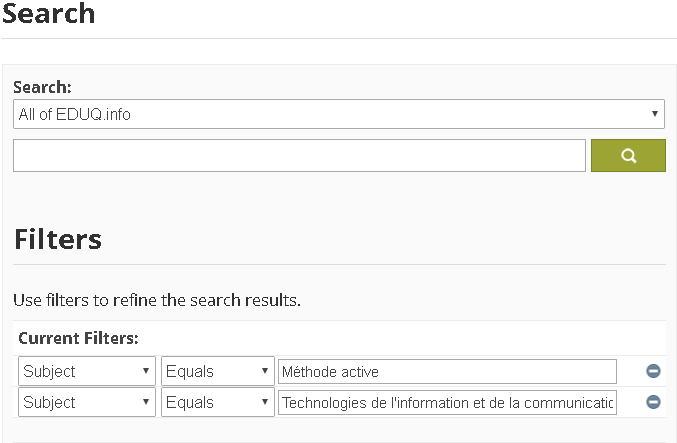“Avec un grand R”: Is active learning possible outside the classroom?
On November 21st, 2017, the ARC (Association pour la recherche au collégial), the AQPC (Association québécoise de pédagogie collégiale) and the CDC (Centre de documentation collégiale) offered the 17th edition of the “Avec un grand R” series.
This videoconference meeting allowed participants to interact with 3 renowned researchers, with extensive experience working with college level:
- Elizabeth S. Charles, from Dawson College
- Nathaniel Lasry, from Cégep John Abbott College
- Kevin Lenton, from Cégep Vanier College
The subject of the meeting was an article written by the researchers and published in 2016 in the Pédagogie Collégiale journal: “Is active learning possible outside the classroom?” [PDF]. The article discusses DALITE, a web platform developed by the authors and aimed at supporting active learning (of the “peer learning” type) outside of the classroom.
I attended the meeting, and so I have had the chance to interact with the researchers.
DALITE
During the “Avec un grand R” activity, we talked about the reality of the researchers, of their motivations for becoming researchers, but also, obviously, of the subject of their article in Pédagogie Collégiale: DALITE.
On DALITE:
- The students answer conceptual questions. For example, in physics: “In the event of a collision between a car and a truck, what vehicle experiences the largest force?” The students answer the multiple-choice question (for example: “The car experiences a larger force.” “The truck experiences a larger force.” or “Both vehicles experience the same force.”)
- Then, they obligatorily have to justify their answer, by providing a written explanation. Their answer is then added to a database, with that of other students who have selected the same answer as them from the multiple choices.
- The students then see the explanations written by other (anonymous) students that have selected the same choice as them, as well as those of students who have selected another option. (If their answer was not the right one, this other option is obligatorily the right answer. But the student does not know, at this point, if their answer was the right one or not.)
- The students are then asked to review their choice: after reading the explanations written by other students, do they change their opinion or not?
This strategy is related to the peer learning method developed at Harvard University by Eric Mazur (and put into practice, for example, by Luc Tremblay from Mérici College, who described his experience in a Profweb real life story. The difference is that with DALITE, the interactions between the students happen in an asynchronous manner, through writing. The researchers have measured that DALITE was as efficient to produce “conceptual gains” in the students as peer learning used in a classroom environment, and more efficient than traditional teaching (lectures).
The DALITE platform can be used in all classes. It has been used in Physics, Chemistry, History, Law… DALITE has been used in English Cégeps and at Harvard.
During the “Avec un grand R” meeting, the researchers announced that DALITE could now be integrated in Moodle. For now, the database containing the answer of the students in Physics is in English, but the researchers are interested in translating it, with the help of volunteer teachers.
The researchers have insisted on the fact that DALITE is a tool to integrate peer learning in a class, and not an end in itself. As usual, technology supports pedagogy, and not the other way around.
An invitation to discuss
Hélène Tardif, project manager for the ARC, hosted the meeting.
Christian Barrette, researcher in pedagogy and project manager for the ARC, acted as a reader-critic during the activity. Christian Barrette then asked many questions to the 3 resource persons.
The activity was an invitation to discuss. The participants were warmly invited to ask question to the resource persons, be them about the subject of peer learning, DALITE, or their research activities.
Elizabeth Charles highlighted the relevance of doing pedagogy research in the college network, one of the few possibilities in the world to work with experts in their disciplines that teach and are motivated by pedagogy. She indicated that her international colleagues were envious of her situation. She also mentioned that these latter were very interested by active learning classes from the college network.
To learn more about active learning and the pedagogical integration of technologies
At the end of the meeting, Isabelle Laplante, from the CDC, proposed a complementary mediagraphy to participants who would like to know more about active learning methods and the information and communication technologies in teaching. You only need to go to EDUQ.info and to do an advanced research with the following filters:
- “Subject – Equals – Méthode active” (the research will still provide results in English)
- “Subject – Equals – Technologies de l’information et de la communication en enseignement”

The search to do on EDUQ.info

